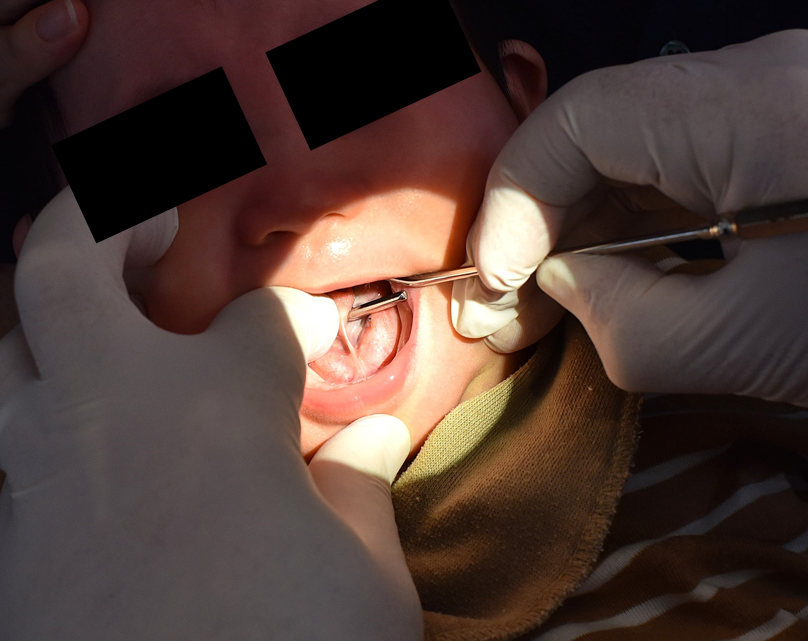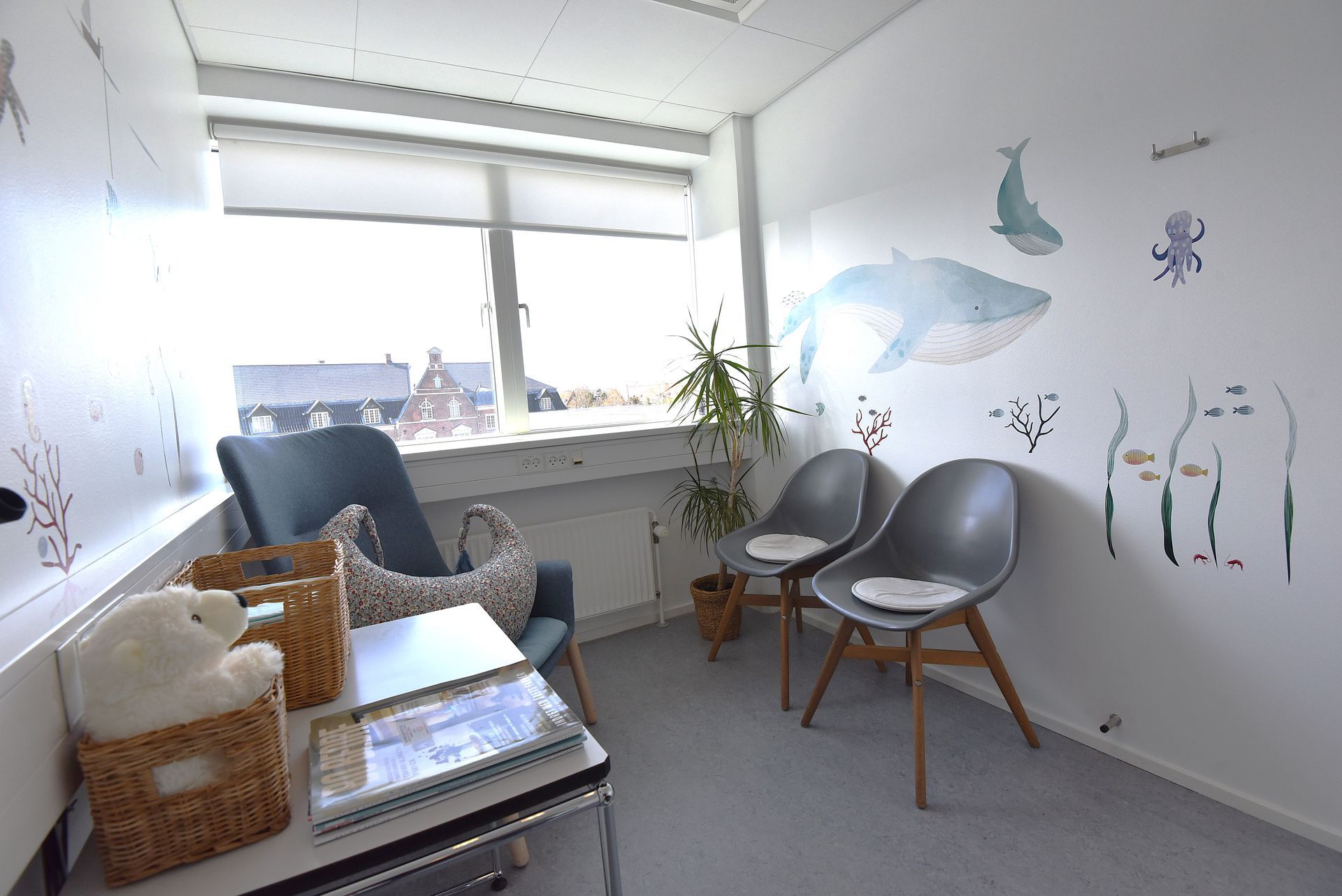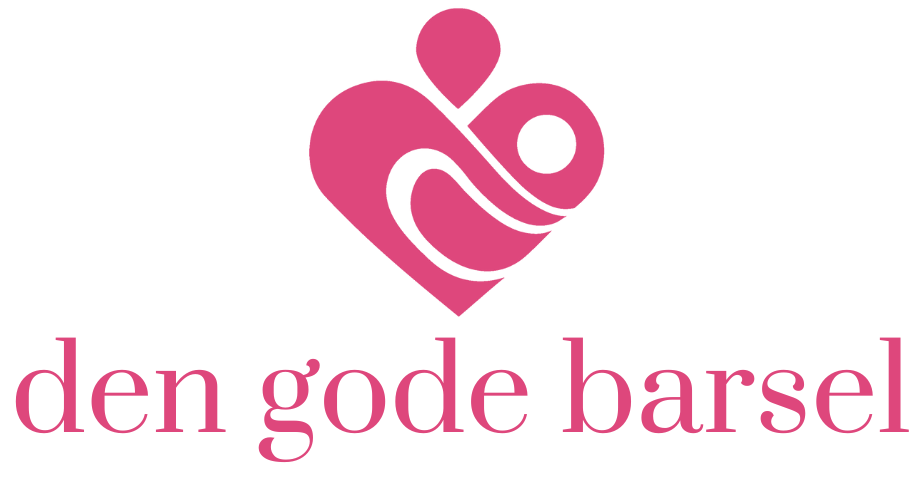Tight tongue tie
Examination and treatment of a tight tongue tie
Safe and caring treatment of a tight tongue tie
At Charlottenlund Private Hospital, we offer gentle and delicate clipping of tight tongue-tie in infants who have problems with breastfeeding. Children who do not have problems with breastfeeding should not have their tongue-tie clipped at all.
A tight tongue tie can affect the baby's ability to breastfeed optimally, which can lead to painful breastfeeding, reduced milk intake, air intake and resulting restlessness in the baby.
We collaborate with leading clinics for women and children, as well as experienced breastfeeding counselors all over Zealand. Our goal is to help with the surgical procedure alone - and thereby contribute to creating the best conditions for a good breastfeeding process - with care, professionalism and individual guidance.
We offer:
✔ Gentle and gentle treatment by experienced specialists.
✔ Interdisciplinary collaboration with specialists in breastfeeding and infant care. With us, it is not just the doctor who gives the indication.
✔ Reassurance and thorough guidance before and after the procedure.
✔ Nursing room where breastfeeding can be resumed immediately after the procedure.

Is there evidence for the treatment?
Always book an appointment for an examination with a breastfeeding counselor or other professional before any treatment of a tight tongue tie with us.
If you suspect that your child is suffering from a tight tongue tie, we recommend that you contact an osteopath or breastfeeding counselor for an impartial and professional assessment. This ensures that all other techniques and treatments have been tried and exhausted before resorting to surgical intervention. This ensures our impartiality and gives you as parents the best assurance of the correct treatment for your child - and not just a haircut at any cost....
See some of our partners below!
Frequently Asked Questions
Symptoms of a tight tongue tie
Due to challenged sucking technique, mother or child may experience one or more of the following:
Problems in the infant:
• The baby has difficulty getting a good grip on the nipple
• The baby may have too much grip on the nipple
• The baby may have difficulty maintaining a grip on the nipple and therefore frequently let go of the nipple
• The child makes clicking sounds
• The baby may suck in his cheeks when sucking on the breast.
• The baby is restless and/or crying when breastfeeding
• The child has insufficient or insufficient weight gain
• The child shows signs of physical discomfort with regurgitation, flatulence or signs of reflux
These problems can be experienced both when the baby is breastfed and bottle-fed.
Problems with the mother:
• Persistent pain in the nipples
• Sores on the mother's nipples
• The mother may experience the baby chewing, munching or biting the nipple
• Poor milk transfer from breast to child;
• the child does not achieve satisfaction
• the mother's breast is not emptying properly
• meals are long
• The mother does not produce enough milk due to poor milk transfer and lack of breast emptying
• Recurrent milk stasis in the mother due to the lack of emptying of the breast.
• Recurrent breast inflammation (mastitis) in the mother due to the lack of emptying of the breast.
When should treatment be considered?
If you are experiencing one or more of the above challenges and it is affecting breastfeeding or your baby's well-being, it may be a good idea to have your baby assessed by a specialist. We recommend that you first seek guidance from an experienced breastfeeding specialist who will examine your infant for a tight tongue & lip tie as well as any tensions or conditions that may be affecting your infant's breastfeeding, and consult with an experienced breastfeeding counselor.
Always remember to check whether your breastfeeding counselor is specially trained to treat infants and whether they have additional courses in breastfeeding.
Early intervention is crucial – research and experience show that intervention is most effective if it is done within the first two months of a child’s life. After that, the child may develop compensatory sucking techniques that may be more difficult to change.
Early treatment also provides the best chance of restoring natural tongue movement and supporting a safe and pain-free breastfeeding experience.
We always recommend an assessment by an experienced and well-trained breastfeeding counselor or other professional with experience and training in tongue-tie issues if you are in doubt.
How is the procedure performed?
Cutting a tight tongue tie is a quick and gentle procedure that only takes a few seconds and is carried out with great care for the child's safety and comfort.
At Charlottenlund Private Hospital, the procedure is performed under local anesthesia, which we have very good experience with.
Typically, parents are thoroughly informed about the procedure and have the opportunity to ask questions.
An assistant then holds the child's head, but the father or mother holds the child's arms and body so that the child does not move during the procedure. The doctor then applies a very small amount of local anesthetic (0.1 -0.2 ml) which needs a little time to take effect. In the meantime, you can easily hold and comfort your child. When the anesthesia takes effect, which occurs after a very short time, the procedure itself is performed.
The doctor uses sterile scissors and a tongue lifter to cut the thin strip of connective tissue under the tongue. If it is a thick posterior tongue band, the doctor cuts until the posterior tongue band is gone and the tongue muscles are visible in a rhomboid-shaped opening (called "the diamond" by some).
The cut itself takes a few seconds and usually causes minimal or no bleeding. As there are very large blood vessels in the floor of the mouth, on rare occasions you may experience heavy bleeding, which we then have to stop surgically. The risk of this is very small.
The child may briefly react to the handling itself, but rarely experiences pain, as the area has very few nerve endings and we always apply anesthesia around the posterior tongue and lip folds if these are also to be treated.
Immediately after the procedure
Immediately after the procedure, you will have the child brought to you as soon as the doctor deems it safe. There will typically be bleeding from the mouth, which may appear more than it is due to the saliva. We therefore do not recommend that parents show up wearing light-colored clothing, as it is impossible to avoid a little bleeding right after the procedure.
After the procedure, you will be offered a room to yourself, where the baby will be offered the breast to stimulate tongue function and create security for both mother and child.
Most children begin to move their tongue more freely immediately after, but the older the child is, the longer it takes to unlearn the compensatory techniques that the child has learned - so don't expect miracles immediately.
When parents and child are feeling well again after breastfeeding - or attempting to do so - you can go home.
After Care
As a general rule, massage or other follow-up treatment is not recommended in Denmark.
However, this is recommended in some places abroad and this simply emphasizes the large differences that exist from country to country.
IMPORTANT INFORMATION - READ THIS
GENERALLY:
There must be a problem for the child – it is the child we are treating, not the mother or the appearance of the tongue tie.
We would like to emphasize that we only have a surgical offer - we are NOT breastfeeding counselors or breastfeeding experts. We will not and CANNOT therefore assess breastfeeding but act as surgeons and those who perform the procedure for which an indication has been given by a breastfeeding counselor who has assessed that cutting is indicated.
Therefore, there must be another qualified health professional (see below) who has assessed the child in addition to us before you come to us.
This should be a professional with specialized training in breastfeeding (ex: IBCLC) and may include the following groups:
- Physiotherapist,
- Osteopath or
- Occupational therapist
The following must also be met before you can get an appointment at Charlottenlund Private Hospital for treatment of a tight tongue tie:
There MUST be problems with the BREAST-FEEDING OF THE CHILD:
This could be, for example:
- Swallows air (clicking sounds) and experiences stomach pain immediately during breastfeeding, or pronounced signs of flatulence.
- Falls off and loses vacuum.
- Not getting enough food - not following growth curves.
- Pronounced pain for the child: colic pain - or
- Pronounced pain for the mother / mastitis that prevents breastfeeding (thus the mother's problem also becomes the child's problem)
Charlottenlund Private Hospital receives referrals from breastfeeding counselors and osteopaths from all over Denmark and values the interdisciplinary collaboration around these patients very highly.
Contact us today - we have no waiting time for treatment. We are ready to help you!











